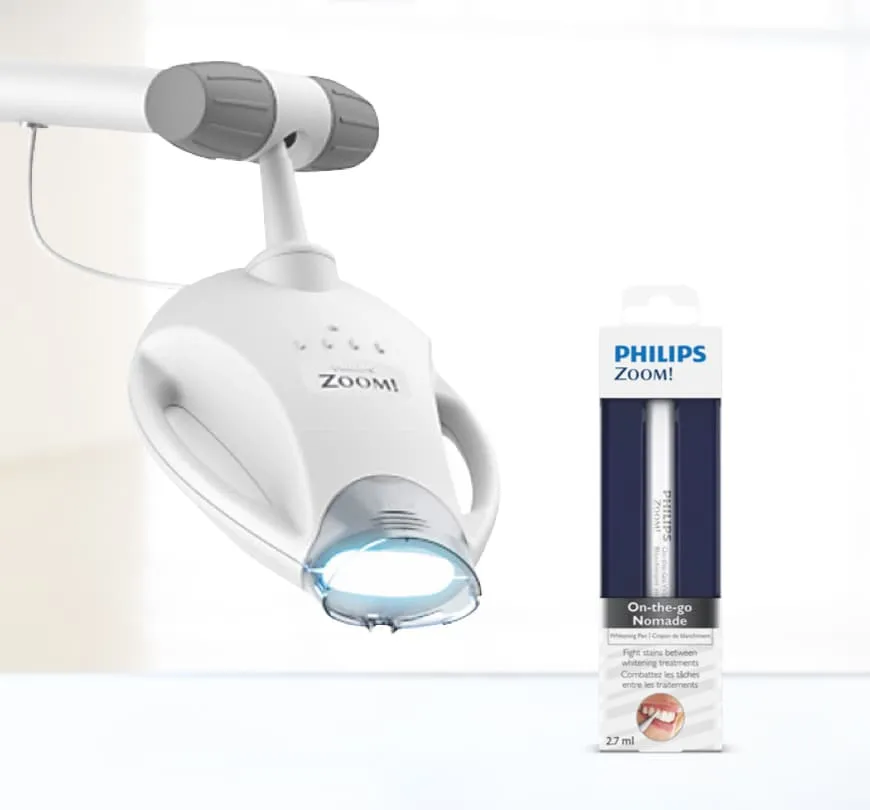What is Philips Zoom Whitening?
Philips Zoom is a popular and effective teeth whitening system offered by dental professionals. It utilizes a concentrated hydrogen peroxide gel, which is applied to the teeth and then activated by a special blue LED light. This process breaks down stains and discoloration, resulting in a noticeably brighter smile in a single office visit. This in-office procedure offers a significant advantage over at-home whitening kits in terms of speed and intensity of results. The procedure is generally safe and can dramatically enhance the aesthetic appearance of your teeth, boosting your confidence. The duration of the whitening process varies, but typically lasts about an hour, making it convenient for patients with busy schedules. The procedure’s efficacy has made it a preferred choice for those seeking immediate and effective teeth whitening solutions.
The Philips Zoom Whitening Process
The Philips Zoom whitening procedure involves several steps designed to ensure optimal results and patient comfort. First, your dentist will conduct a thorough examination of your teeth and gums to ensure you are a suitable candidate for the treatment. Then, a protective barrier is applied to your gums and lips to prevent irritation. The whitening gel is then carefully applied to the surface of your teeth. Following the gel application, the blue LED light is directed at your teeth for a specified period, typically in intervals. During the treatment, you might experience some sensitivity, which is a normal part of the process. After the treatment, the dentist removes the gel and provides you with post-operative instructions, crucial for maintaining your new brighter smile and the longevity of your whitening results. Finally, you’ll receive a post-whitening kit for home care.
Understanding Post-Op Instructions
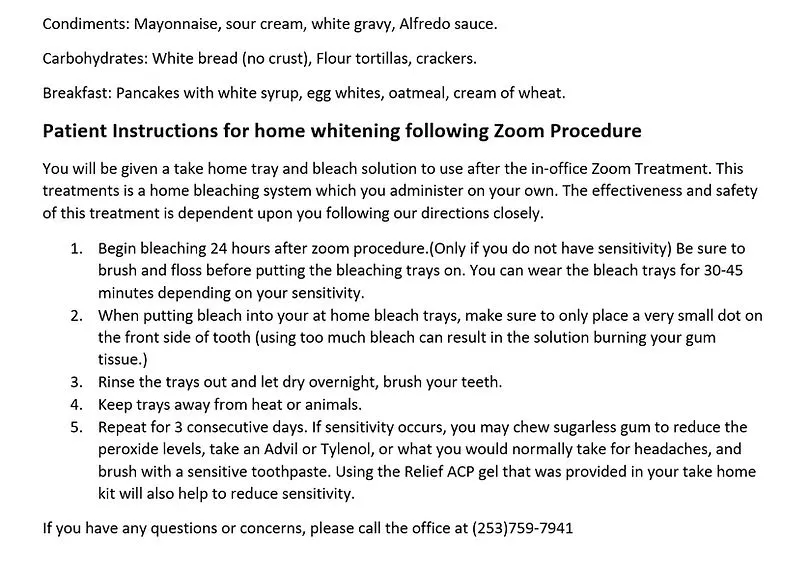
Following post-operative instructions after Philips Zoom whitening is crucial for maximizing the whitening results and minimizing any potential side effects. These instructions are designed to protect your teeth from re-staining and to manage any sensitivity you may experience. The post-op care typically involves dietary restrictions, oral hygiene guidelines, and potentially using products to alleviate sensitivity. Adhering to these guidelines ensures that your teeth stay as white as possible for as long as possible. The dentist will provide a detailed overview of these instructions, often including a printed handout and verbal explanations. Properly following these instructions contributes to a successful whitening outcome and a more confident smile. Understanding and adhering to these steps significantly impacts the longevity of your whitening treatment.
Dietary Restrictions
One of the most important aspects of post-whitening care is adhering to dietary restrictions. Immediately after the Philips Zoom treatment, your teeth are more porous and susceptible to staining. Therefore, it is essential to avoid foods and drinks that can stain your teeth. These restrictions typically last for the first 48 to 72 hours, although some dentists may recommend a longer period. This period is critical for allowing the enamel to re-mineralize and stabilize. Avoiding staining agents during this phase helps prevent the absorption of color pigments into your teeth, which can diminish the whitening effect. Carefully considering what you eat and drink is essential during this time to protect the investment made in your smile.
Avoiding Staining Foods and Drinks
To maintain your bright, white smile after Philips Zoom whitening, you should avoid certain foods and drinks known for their staining properties. Coffee, tea, red wine, and dark-colored sodas are common culprits. These beverages contain pigments that can easily stain the porous enamel of newly whitened teeth. Additionally, you should steer clear of highly pigmented foods like berries (strawberries, blueberries, raspberries), beets, soy sauce, and curries. These foods contain strong colorants that can compromise your whitening results. It is important to be vigilant and mindful of what you consume during the critical post-treatment period to protect your newly whitened smile.
Foods You Can Safely Consume
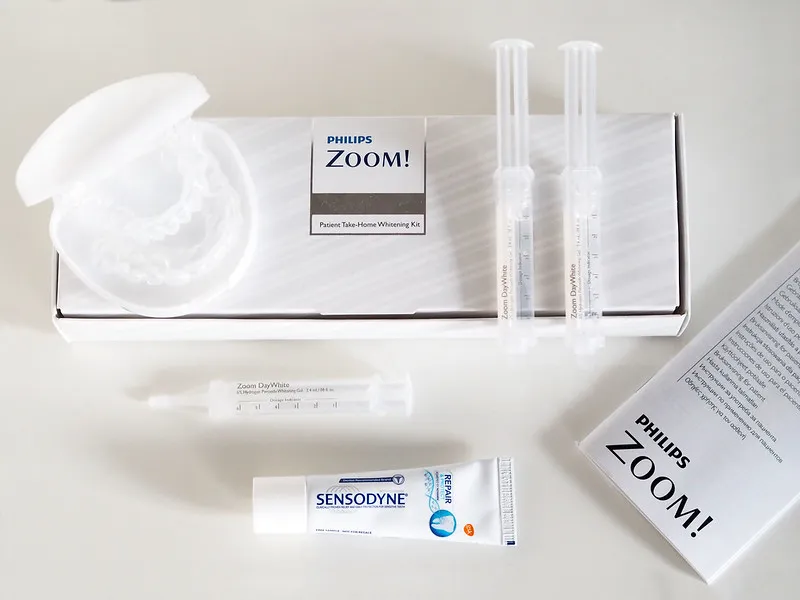
While some foods and drinks are off-limits, many options are safe to consume after Philips Zoom whitening. Opt for a diet of white and clear foods. This includes white rice, pasta, plain chicken or fish, and potatoes. Dairy products like milk, yogurt (without added color), and cheese are also good choices. Clear beverages like water, clear soda (Sprite, 7-Up), and some light-colored juices (apple juice) are generally safe. The key is to choose foods and drinks that are light in color and do not contain staining pigments. Following this dietary guidance can help you enjoy your newly whitened smile without compromising its brightness.
Oral Hygiene Practices
Maintaining good oral hygiene is essential after your Philips Zoom whitening treatment. This helps to keep your teeth clean and prevents staining. Regular brushing and flossing, along with the correct products, are critical components of your post-whitening care. Oral hygiene routines not only maintain the brilliance of your newly whitened teeth but also help prevent any further discoloration or staining. Careful attention to oral hygiene also supports overall dental health by preventing cavities and gum disease. Consistent and mindful care of your teeth is essential for long-term oral health and a consistently bright smile.
Gentle Brushing Techniques
After Philips Zoom whitening, it’s important to brush your teeth gently to avoid irritating your gums and damaging the enamel, which can be temporarily more sensitive. Use a soft-bristled toothbrush and apply minimal pressure. Brush in a circular motion rather than scrubbing back and forth, focusing on each tooth surface. Brushing gently helps remove plaque and food particles without causing abrasion. It is recommended to brush at least twice a day, or after every meal if possible. Using a gentle technique helps to protect your teeth and gums and contribute to the longevity of your whitening results. The soft bristles and gentle technique will ensure a comfortable and effective cleaning routine.
Recommended Toothpaste and Products

Choosing the right toothpaste is important in maintaining your white smile after Philips Zoom whitening. Look for a non-abrasive toothpaste, meaning it has a low Relative Dentin Abrasivity (RDA) value, typically below 100. This ensures that your teeth are cleaned without causing damage to the enamel. Toothpastes with fluoride are beneficial as they help to strengthen the enamel and protect against sensitivity. Your dentist may also recommend a toothpaste specifically designed for post-whitening care, which often contains ingredients that help reduce sensitivity and maintain brightness. In addition, using a mouthwash that is alcohol-free can also help prevent staining and irritation. Always consult your dentist for specific product recommendations tailored to your oral health needs.
Managing Sensitivity
Sensitivity is a common side effect after Philips Zoom whitening. This happens because the whitening agents can temporarily affect the nerve endings in your teeth. While sensitivity typically subsides within a few days, there are steps you can take to manage and minimize it. The use of desensitizing toothpaste, avoiding extremely hot or cold foods and drinks, and following your dentist’s recommendations are key to managing any discomfort. If the sensitivity is significant, your dentist may recommend additional treatments or prescribe medications to provide relief. Properly addressing tooth sensitivity ensures you can enjoy your brighter smile comfortably and without any unnecessary discomfort.
Dealing with Tooth Sensitivity
If you experience tooth sensitivity after Philips Zoom whitening, several strategies can help alleviate the discomfort. First, use a desensitizing toothpaste containing potassium nitrate or stannous fluoride. Brush gently to avoid further irritation. Avoid extremely hot or cold foods and drinks, as these can trigger sensitivity. If the sensitivity persists, your dentist might recommend fluoride treatments or prescribe a specific desensitizing agent to use at home. Over-the-counter pain relievers, such as ibuprofen, can also help to alleviate any discomfort. It’s important to consult your dentist for advice on the best course of action for managing sensitivity.
Sensitivity Relief Products
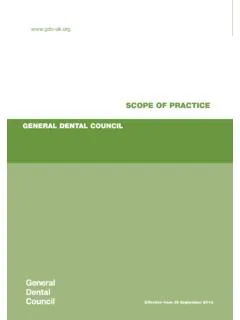
Several products are available to help reduce tooth sensitivity after Philips Zoom whitening. Desensitizing toothpastes are a primary choice, offering relief with regular use. These toothpastes work by blocking the tubules in the teeth, which transmit sensations to the nerves. Fluoride treatments, available from your dentist, can strengthen the enamel and reduce sensitivity. Your dentist may also prescribe a fluoride gel for home use. Over-the-counter products like special mouthwashes that contain fluoride and other desensitizing agents can also provide relief. Discuss with your dentist which products would be most appropriate for your needs.
Maintaining Your Results
Maintaining the results of your Philips Zoom whitening involves consistent care and attention to your oral hygiene habits. Follow the post-operative instructions carefully, especially regarding dietary restrictions and oral hygiene. Regular dental check-ups and cleanings are crucial for keeping your teeth bright and healthy. Avoiding staining foods and drinks as much as possible will also extend the life of your whitening results. In some cases, your dentist may recommend at-home touch-up treatments to maintain your desired level of whiteness. Consistent adherence to post-whitening care is the most effective way to ensure your smile stays radiant.
Follow-Up Appointments
Follow-up appointments with your dentist are essential for monitoring the long-term results of your Philips Zoom whitening. These appointments typically involve an examination of your teeth and gums to ensure your oral health is in good condition. The dentist can assess the shade of your teeth and provide any necessary touch-up treatments to maintain your desired level of whiteness. During these visits, you can also discuss any questions or concerns you may have regarding your oral care routine. Regular follow-up appointments ensure that any issues are addressed promptly and that your smile remains healthy and bright. These appointments are part of an integrated strategy for maintaining optimal oral health.
Long-Term Oral Care
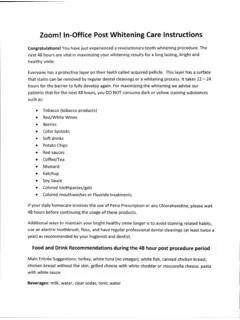
Long-term oral care is key to preserving the benefits of your Philips Zoom whitening treatment and maintaining overall oral health. This involves a consistent oral hygiene routine, including brushing at least twice a day with a non-abrasive toothpaste and flossing daily. Regular dental check-ups and professional cleanings are also vital. During these visits, your dentist can monitor your oral health and provide personalized recommendations. Limiting your consumption of staining foods and drinks will help to prevent discoloration. Incorporating these habits into your lifestyle will contribute to a consistently bright smile and a healthy mouth for years to come. A preventative approach to oral care is crucial for long-term success.
When to Contact Your Dentist
It’s important to know when to contact your dentist after a Philips Zoom whitening treatment. If you experience severe or persistent tooth sensitivity that doesn’t improve within a few days, you should contact your dentist for advice. If you notice any changes in the color or appearance of your teeth, or if you have any concerns about your gums or overall oral health, it is important to seek professional advice. Any sign of discomfort or problems, like changes in the color or the appearance of your teeth, warrants a call to the dentist. It is always better to seek guidance from your dentist rather than to assume a problem will resolve on its own. Your dentist can provide the necessary care and guidance to protect your investment and maintain your bright, white smile.
